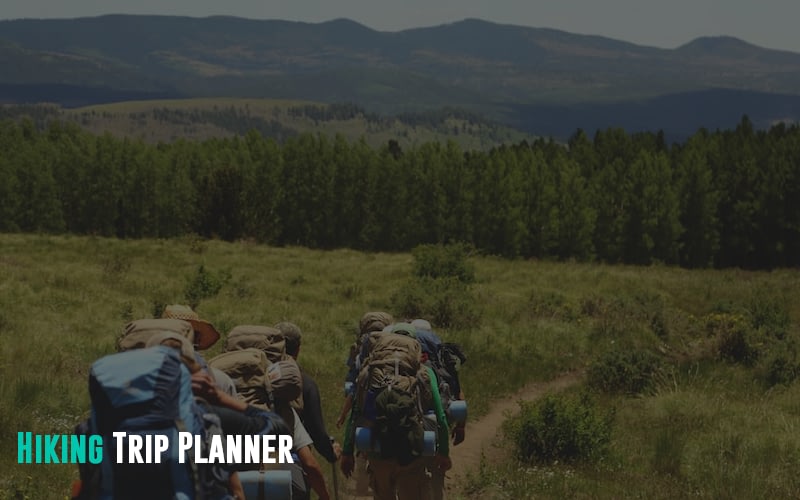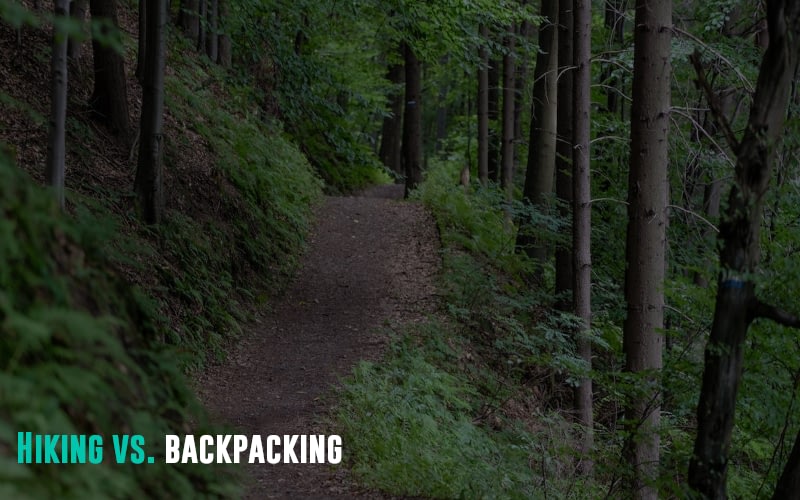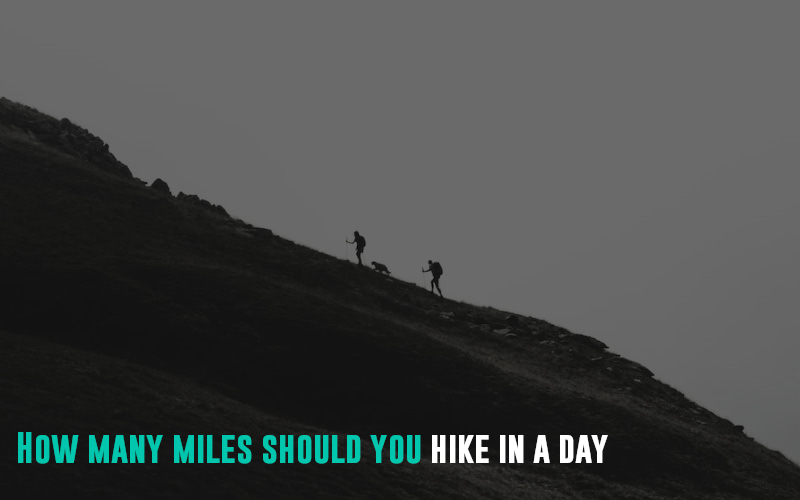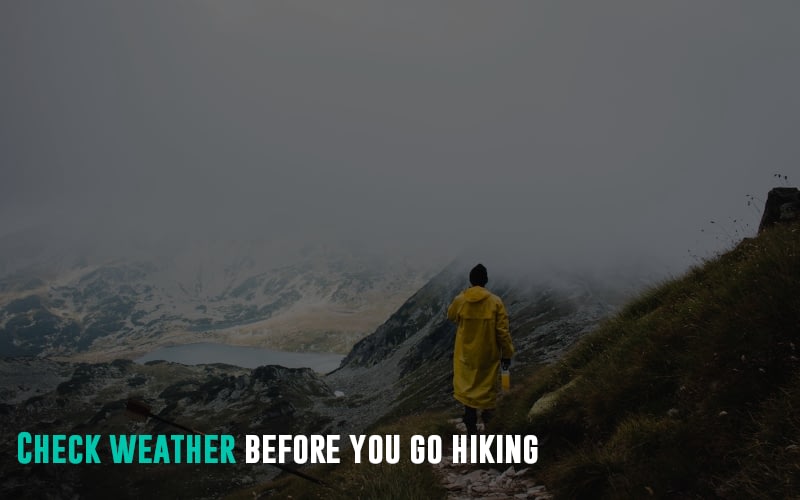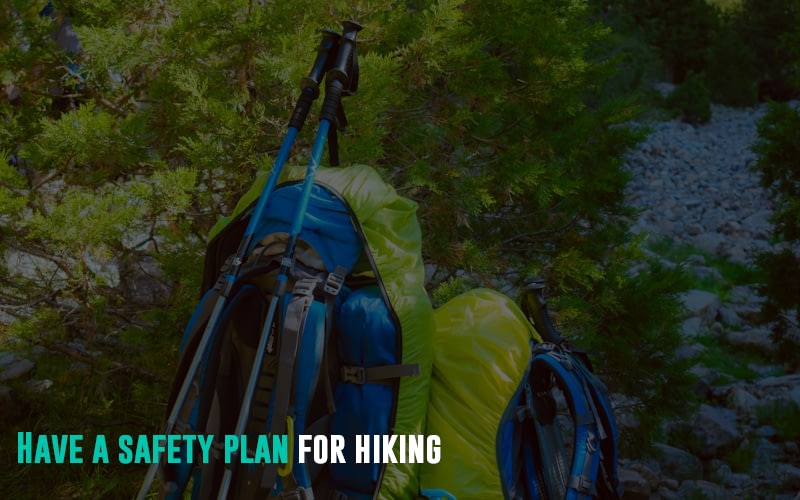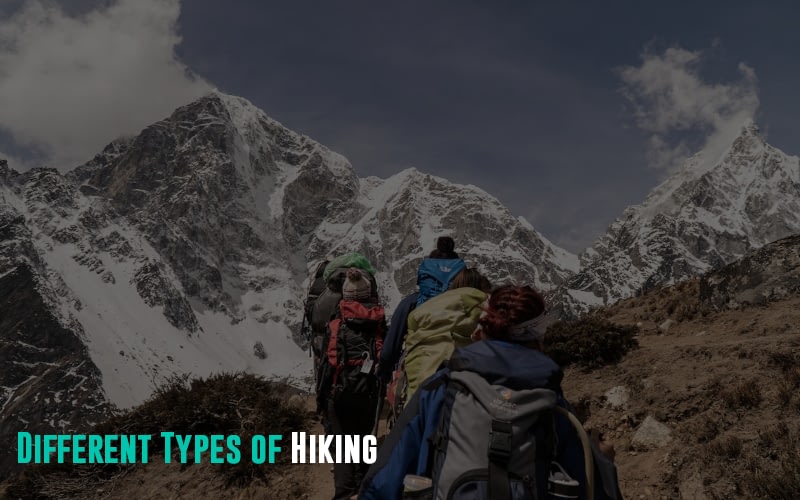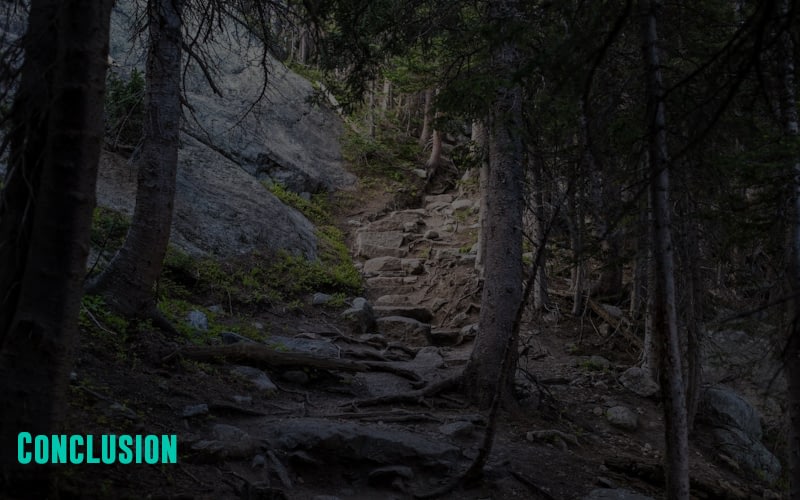Hiking is one of the best and most accessible ways to know nature. An ideal hike has no set distance, so it is about your preferences. You only need to be walking on rocks, sand, or dirt, have the essential gear, and know where you are going.
If you are enjoying nature and taking in the surrounding fresh air, it doesn’t matter if you’re going two or 20 miles – you’re still hiking! Your distance and speed don’t determine whether you are a “good” hiker, which makes it perfect for people of all athletic abilities. Planning your hikes in detail is essential to avoid any hiccups. This comprehensive guide will examine how to be the best hiking trip planner. So, let’s dive in.
Featured Image Source
Hiking vs. backpacking
A lot of people confuse hiking with backpacking. So, before you start planning your hiking trip, it’s essential to understand the difference between the two. Hiking usually refers to day trips, where you set out and return within a day, following a trail.
Backpacking, also known as trekking, on the other hand, involves multi-day expeditions, carrying camping gear and provisions, and staying overnight at campsites or backcountry locations.
How long should a hiking trip be?
The duration of your hiking trip depends on various factors, including your hiking goal, type of trail, hiking experience, and weather conditions. While some hikes may be as short as one hour, others can extend to multiple days or weeks. An average hiker can hike up to 2 miles in one hour. Similarly, they would require seven to eight hours to cover a distance of 15 miles. So, you will have to consider your experience and the distance you want to cover in a day to decide the duration of your hiking trip.
On the other hand, if you are going on extended treks, like thru-hikes, the trip can last several weeks or months. Ensure that you assess your physical condition, stamina, and the time you have available before deciding on your trip’s total duration.
How many miles should you hike in a day?
No one fixed how much distance you should hike in a day. The number of miles you should cover dramatically depends upon your fitness level, hiking experience, trail conditions, weather, and more. As a general guideline, a beginner can hike for about 6 to 8 miles (10 to 13 km) in a day. On the other hand, hikers with average experience can aim for around 10 to 16 miles (16 to 26 km) a day, which allows for a pleasant and manageable pace. For experienced hikers, a distance of about 20 to 30 miles (32 to 48 km) should be enough.
The distance of a hike is greatly affected by elevation gain. You can cover a relatively shorter distance when hiking uphill, but going downhill allows for a faster pace.
Also, if the ascent is too steep, you may need frequent stops to catch your breath. This will again increase the time needed to complete the hike. Typically, you can estimate a 2-mile (3.2 km) distance for every 1,000 feet (305 meters) of elevation gain.
Similarly, keeping track of time is essential no matter how experienced you are at hiking. Set a specific time to turn back so you can finish your hike while it’s still light outside. Remember, the weather and trail difficulty can impact how fast you go. Be flexible and willing to adjust your plans accordingly.
While being a hiking trip planner, it is crucial to set achievable time goals for your hike and be ready to retrace your steps if necessary. Know your limits, and do not unnecessarily push yourself to exhaustion. You should always prioritize safety and practice mindfulness, even if you haven’t reached your destination. Remember, you can hike the same trail on another day.
Top Tips to Consider for Your Hiking Trip Planner
Hiking can be one of the most fun and rewarding experiences if you plan for it correctly. It is the third most popular outdoor activity in the United States. It helps you feel physically rejuvenated, but spending time in nature can improve your mental health and make you feel calmer. That said, here are some top-notch tips to enhance your hiking trip planner and make your trip several times more fun.
- Pay Attention to Your Footwear: Your shoes play one of the most important roles in your hiking trip. So, invest in sturdy footwear that offers good traction and support.
- Smart Snacking: Hiking is a physically demanding activity. And so, you will feel hungry and require energy quite often. Consider packing some delicious trail mixes, energy bars, drinks, and your favorite dry fruits to keep your body fueled on the go. These snacks are not only tasty but relatively easy to pack and eat.
- Dealing With Injury: Did you know that the most common type of hiking injury is blisters on your feet? To deal with them effectively, carry medical tapes and antiseptic ointments.
- Follow the Leave No Trace Ethics: Respecting and protecting nature is crucial. Make sure to stay on designated trails, pack out all trash, and respect the natural surroundings to preserve their beauty for future hikers. Almost 10% of all the hiking trails are near water bodies. Be sure not to throw trash into them.
Top Considerations for Planning a Hiking Trip
Before you start your hiking adventure, it is essential to consider several crucial things during the planning process. While you can find several beautiful and challenging hiking trails, you need top-notch planning for a memorable hiking trip. Here are some of the top things to include in your hiking trip planner:
- Choosing the Right Destination: There are various beautiful destinations in the world offering stunning hiking trails. However, while selecting the destination, consider important factors like your experience level, the weather, the best time to visit the destination, etc.
- Weather Awareness: Weather is crucial to your hiking and wilderness trip planner. Once you have selected the destination, check the local weather forecast and seasonal conditions. Sudden weather changes can greatly affect your hike, so it is necessary to be prepared to ensure safety and comfort.
- Decide on Your Transportation Plan: Setting up your transportation plan includes deciding how you will reach your destination. Consider checking out public transportation options, if available. If you are going on a hiking trip as a group, consider carpooling to save money and minimize your environmental impact.
- Gather the Required Navigation Tools: Regarding a hiking trip, you will require various special navigation tools. So, buy and collect all the necessary tools like maps, GPS devices, and a reliable compass.
- Prepare for Emergencies: Emergencies are widespread on hiking trips. To ensure that these situations don’t accelerate into something major, it’s important to be fully prepared for such situations. Carry a well-stocked first aid kit, necessary medicines, and communication devices to call for help.
How do I plan a good hiking trip?
When planning a hiking trip, it is crucial to prioritize safety and be adequately prepared for any obstacles you may encounter on the trail. Some important tips to keep in mind include:
Prepare an offline map
Nowadays we all depend on smartphones and the internet too much for anything we need. But when you go hiking, there is every possibility that your trail may be in a low reception area. So, always download an offline map to navigate the trail quickly. Or keep a physical map and compass with you just to be sure.
Knowing your route
While many people make the mistake of going on spontaneous hikes, it is vital to learn everything there is to know about the specific trail you plan to hike.
Research the route’s length, elevation gain, and challenging features, such as steep ascents, narrow passages, or water crossings. You can also ask for advice from other hikers with experience on the trail. Understanding the trail’s difficulty level will help you mentally and physically prepare for what’s to come.
Know your fitness and endurance levels
Fitness is crucial for hiking, but try not to gauge your speed or efficiency based on age or weight. Novice hikers, though young, may not have solid legs or glutes. But as you hike frequently, your strength will increase, and you can walk more.
However, if you get exhausted, then stop a bit and rest. If you are still not feeling better, turn back and return another day. Remember, Rome was not built in a day. It may take you months to reach the endurance level of an experienced hiker, so push yourself slowly.
Be aware of animal dangers
Encounters with wild animals happen daily during hiking, especially when journeying through wilderness areas. You can often encounter animals like bears, cougars, snakes, mountain goats, etc. While seeing them can be exciting and frightening, staying calm and avoiding doing anything that might scare the animals is essential.
Carry bear-resistant containers for food in bear country. Make noise to alert wildlife to your presence, and know how to react if you encounter a potentially dangerous animal. Reports suggest that most bears attack when they feel threatened or are trying to protect their babies. So, avoid running or trying to scare the animal, as it can cause them to attack you.
Preparing food and water
Hiking uphill vigorously can quickly burn up to 900 calories in an hour. So, pack a sufficient amount of food to sustain your energy levels. You can go for lightweight, high-energy snacks like trail mix, energy bars, nuts, seeds, ready-made salad pouches, etc. Your body will benefit more from high-protein, high-energy foods like jerky and nuts than high-carb, highly processed carbohydrates.
Carry sufficient water with you, at least one liter for every two miles, especially in dry or remote areas. Drink around 2 cups for each hour of hiking. After a few treks, you will learn how to estimate your consumption needs more accurately.
Carry reusable water bottles and water purification tablets for freshwater sources along your route, and refill them whenever possible. Just ensure that you have enough provisions to stay energized throughout the hike.
Buy proper footwear
Your shoes are the most essential part of your hiking stuff. So, invest the most in it, both time and money. Your hiking shoes should have extra traction and grip. This will reduce wear and tear, and you will be able to walk comfortably in it. Typically, you will want your shoes to be stiffer as well as more supportive for longer hikes and heavier loads.
Check trail conditions
Trail conditions can change unexpectedly due to weather, maintenance, or even natural disasters. Check online forums and trail websites, or contact local ranger stations for the latest trail conditions. Getting the latest trail conditions helps you prepare for potential challenges and make well-informed choices.
Check weather before you go hiking
Weather conditions in the wilderness can change rapidly, even on a clear day. Check the weather forecast for your hiking area and be prepared for unexpected shifts. A smart way to do that is by dressing in layers to adapt to temperature changes.
Remember to carry good-quality rain gear, sunglasses, a hat, and extra hiking boots. If you are hiking during the winter months, pack extra insulation. In extreme weather conditions like a storm, be prepared to take shelter and adjust your hiking trip planner accordingly.
First Aid
Accidents and injuries are common when you are hiking in the wilderness. Being fully prepared for them and having the necessary first-aid essentials can help you mitigate significant health hazards.
To handle injuries, carry a well-stocked first aid kit and know how to use it. Use books and YouTube videos to learn basic wilderness first aid techniques to handle common injuries. Further, inform your family or friends about your hiking plans, including your trail route planner and expected return time. This ensures someone is looking out for you in case of an emergency. If possible, always hike with a companion.
Check for trail permits before you go hiking
Some trails and national parks require permits for hiking. It’s essential to research the requirements early and get the permit if needed. This way, you’ll follow the rules and contribute to the proper trail usage management. If you want to stay overnight or camp along the trail, check whether any additional permit is needed to avoid legal troubles.
Have a safety plan for hiking
Many novice hikers forget about this in their excitement to go on their first hike. Before leaving the house, double-check that you have everything you need. Make sure that you know where you are going. Let your family and friends know where you are hiking and when you will be back. This will help them to rescue you in case something terrible happens while you are on the trail.
Many hikers often twist their ankles while hiking. So, it is essential always to have a first aid kit on hand and to be familiar with how to use it during an emergency. Also, keep emergency numbers with you and a fallback method to contact assistance if cell coverage is unavailable.
If you love to hike frequently, try to invest in devices that use satellite communication for added safety, and keep a whistle with you all the time. It is a small but effective tool for making yourself known to those in the vicinity.
Gear Needed for Hiking
A hiking trip planner will be incomplete without good-quality hiking gear. After all, hiking is not a walk in the park; it is an adventurous outdoor activity that requires proper equipment for safety and efficiency. As the popularity of hiking continues to grow, the hiking gear market is also booming. In 2021, the hiking gear market was valued at USD 22 billion! It is expected to reach USD 32 billion by the end of 2030!
- Layers of Clothes: Dressing in layers can help you quickly adapt to the changing weather conditions. Pack some moisture-wicking base layers, warm and comfy mid-layers, and a waterproof outer layer like a rain jacket.
- Hiking Boots and Backpacks: Invest in sturdy, comfortable hiking boots or shoes with good traction. Also, buy a spacious backpack carrying your gear, water, food, and first-aid kits.
- Hiking Pole: Buy a good and sturdy hiking pole to reduce strain on your knees and maintain balance on uneven or steep terrain.
- Other Hiking Essentials: Depending on the trail and season, you may need additional gear. This can include micro spikes for icy terrain, sunglasses for sun protection, first-aid kits, navigation tools, fire starters, snack packets, drinks, and other hiking gadgets.
- The 10 Essentials: Critical for having when your in the wilderness, we’ll go into these items needed in the below section.
Always keep in mind that bringing too much stuff can make you slower and add unnecessary weight. Pack wisely by choosing lightweight, versatile, and necessary gear for your specific hiking trip.
10 essentials you will need to pack for hiking
The 10 Essentials we have rounded up here consist of important items that every hiker should always have, regardless of the hike’s duration or level of challenge. These include:
- Navigation tools: map, compass, and GPS device
- Sun protection: sunscreen, sunglasses, and hats
- Insulation: extra clothing layers and rain protection
- Lighting: headlamp or flashlight
- First Aid Supplies
- Fire supplies: waterproof matches or lighter
- Repair Kit and Tools
- Food supplies: snacks, energy bars, salad pouches, etc
- Water bottles, water purification tablets, etc
- Emergency shelter: space blanket or bivy sack
Different Types of Hiking
Hiking is generally considered a leisurely activity that involves walking through the natural landscapes. However, it comes in various forms. It is a highly adventurous and versatile activity that interests many people with various skill levels. Here are some common types of hiking that you can include in your hiking trip planner:
- Trekking: One of the most popular types of hiking involves covering longer distances and may require multi-day trips. Trekking can be enjoyable if you want a deeper connection with nature and don’t mind some physical exertion.
- Scrambling: Scrambling is another popular type of hiking that combines both hiking and basic climbing. It involves ascending steeper, more rugged terrain with the help of your hands and arms for balance and progression. It offers the exciting challenge of mountain climbing without the technicalities.
- Backpacking: As its name suggests, backpacking involves carrying all your gear and supplies on your back and embarking on multi-day journeys. It is often done in more remote areas.
- Day Hiking: It is a fun-filled activity ideal for individuals with limited time and who want a shorter adventure. Day hiking involves starting your hiking trip in the morning and returning by the evening. It’s an excellent way to explore local trails and nature without extended stays.
- Thru-Hiking: Thru-hiking is a long-distance hike involving an entire trail or route in one continuous journey. Trails like the Appalachian Trail or the Pacific Crest Trail can be covered in thru-hiking. It demands careful planning and commitment.
It is also important to note that while they may sound similar, hiking and climbing are two entirely different activities. The main thing that sets them apart is the steepness. Hiking is a long-distance walk on moderate inclines along well-marked trails. On the other hand, mountain climbing is a different
Easiest way to set up a hiking trip?
Setting up a hiking trip needs a lot of planning. It would be best to consider many things before you start the hike, like the route, packing, things to do, safety aspects, first aid, etc. This is where a trail route planner like Travel-Wise can help you.
Travel-Wise is a versatile platform that allows you to pre-plan and map your hiking route. You can easily create itineraries using the AI-powered template library and include maps for them to identify your trail quickly. It also allows you to download offline tiles, ensuring access to maps even in areas without network coverage.
Travel-Wise has a massive community of travel lovers where you can share your trips and ideas and get valuable advice from seasoned hikers. You can also journal and share your hiking experiences with your family and friends.
Conclusion
Going on hiking trips is a great way to connect with nature and take some time off from stressful and monotonous daily life. But being a hiking trip planner is no easy job. You have to plan meticulously and carefully to make the trip enjoyable and safe.
With Travel-Wise, you can easily map out your hiking route and trails in advance, offering detailed information on terrain, distance, elevation, etc. The offline usability sets it apart, ensuring you have access to your route even when you’re off the grid, deep in the wilderness. You can also find templated itineraries by our community members and use them for your hiking tips.
Further, you can use our Country Guides to learn about various countries and find out if there are any hiking trails worth exploring. And don’t forget to use our travel journal to record all your beautiful hiking memories and experiences. It’s entirely available offline!

